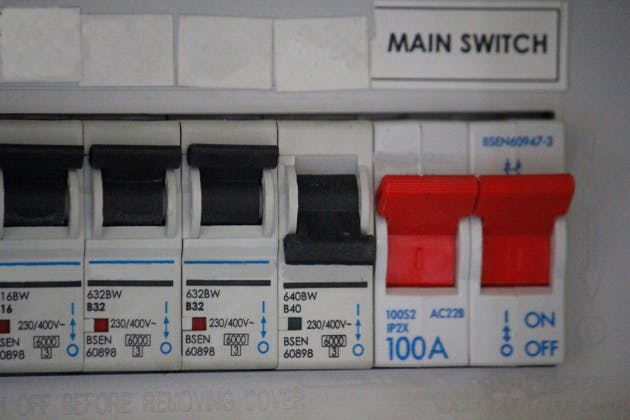Many households still rely on outdated or faulty consumer units without realising the risks they pose. Your consumer unit, often called a fuse box, is at the heart of your electrical system, controlling and distributing power across your home. If it is not up to standard, it can leave your property vulnerable to electrical faults, fire hazards, and even invalid insurance.
Signs Your Consumer Unit Could Be Unsafe

Outdated Fuse Boxes
Older fuse boxes with rewirable fuses are still present in many homes, especially those that haven’t been rewired in decades. These units lack the advanced safety features of modern consumer units, such as Residual Current Devices (RCDs) and Miniature Circuit Breakers (MCBs). Instead of shutting down power almost instantly when a dangerous fault occurs, old-style fuses rely on wires that burn out when overloaded, which can be slow and unreliable. This delay increases the risk of electric shock, fire, and damage to appliances. If your fuse box still has wooden backs, ceramic switches, or fuse wire, it is likely outdated and should be replaced.
Burn Marks and Overheating
Visible damage around your consumer unit is one of the most alarming signs of trouble. Burn marks, scorch marks, or melted plastic often indicate overheating, which may be caused by loose connections, faulty components, or overloaded circuits. A faint burning smell near the consumer unit is another red flag and should be treated as an urgent issue. Ignoring these warning signs could lead to complete system failure or even an electrical fire. Any evidence of heat damage means it is time to call in a qualified electrician without delay.
Frequent Tripping
Occasional tripping of your consumer unit can be normal, as it is designed to protect you when faults occur. However, if your power supply cuts out frequently, it suggests a deeper problem. This could mean that your circuits are overloaded by modern electrical demands, such as multiple appliances and devices running at once, or that the consumer unit itself is too old to cope with today’s usage levels. Persistent tripping should always be investigated, as it can point to hidden wiring faults or the need for an upgraded system.
No RCD Protection
RCDs are a critical safety feature required in all modern consumer units. They monitor the flow of electricity and disconnect the circuit within milliseconds if a fault is detected, preventing serious injury or fatal electric shocks. If your home does not have RCD protection, it is a clear sign that your system is outdated and potentially unsafe. Without this protection, everyday activities such as using kitchen appliances, garden equipment, or even plugging in your laptop can carry unnecessary risks.
Poor Wiring
A consumer unit that has been tampered with or installed by someone without proper qualifications can be a hidden danger. Messy wiring, circuits without labels, or evidence of shortcuts all suggest poor workmanship. Non-compliant installations may not only be unsafe but could also fail to meet building regulations. This can create long-term risks and may even leave you liable if problems occur. A properly installed consumer unit should be neat, well-labelled, and fully compliant with current wiring regulations.
Insurance and Compliance Issues
Beyond the safety risks, there are also financial implications of having an unsafe consumer unit. Many insurers require proof that a property’s electrics are up to current standards, particularly after incidents like fires. If your consumer unit is outdated or found to be unsafe, your insurance claim could be denied, leaving you with costly repairs to pay for yourself. Regular inspections and timely upgrades help ensure both compliance with regulations and continued protection under your home insurance policy.
Quick Homeowner Checklist for Consumer Unit Safety
If you’re unsure whether your consumer unit might be unsafe, here are a few simple checks you can do at home before calling in a professional:
- Look for signs of burning, scorch marks, or melted plastic around the unit.
- Check whether your consumer unit has old-style rewirable fuses instead of modern switches.
- Notice if the power trips frequently when using everyday appliances.
- See if there are RCD switches (usually marked with a “test” button) on your unit.
- Inspect the wiring — if it looks messy, unlabelled, or tampered with, it may not be safe.
If you spot any of these issues, it’s time to have your system inspected by a qualified electrician.
Electricians in Chingford, Epping, Loughton, Woodford, South Woodford, Walthamstow, and Wanstead
We offer expert consumer unit upgrades, inspections, and professional repairs. Our team of qualified electricians can make sure your property meets current safety standards. Call us today on 0333 335 6281 and we’ll be happy to help.


